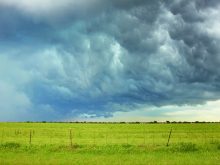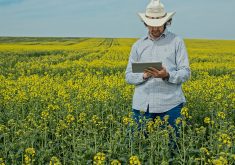There’s a saying that you can’t go broke making a profit. True enough — or is it?
My September column looked at averages of financial performance. How many years out of 10 would you consider to be “winners” and how many would be “losers?” The remaining years are in the grey zone: not so good but then, not so bad, either. Many farmers I talk to would be happy to get “winners” three out of 10 years, as long as they could limit the “losers” to two or three.
Read Also

Proactive approach best bet with looming catastrophes
The Pan-Canadian Action Plan on African swine fever has been developed to avoid the worst case scenario — a total loss ofmarket access.
Table 1 is a summary of a farm’s income statement, taken from a real farm. It’s the data that I used for my September article.
If you look at the net income values, you’ll see a “winner” and a “loser” in the five-year block with the others being in the so-so category. Adding up the net income over the five years produces a total of $697,874. It’s hard to go broke when you’re making a profit. Or is it?
Let’s look a little deeper at where the margins of profit are coming from.
Table 2 is the same as Table 1 with one major difference. Notice that it has a line inserted called net operating profit margin. Remember, this is real data taken from a real farm.
You’ll have noticed quite a bit more red ink at the net operating profit margin line.
Net operating profit is the margin of profit from core activities, such as grain, livestock, dairy and vegetables. It’s revenue from product sales after subtracting all the expenses, including amortization on buildings and equipment, that are required to produce the crop and raise the animals.
These activities are directly associated with the primary production on a farm. Revenue from these activities can be thought of as recurring revenue — the businesses farmers are in.
The other revenue category includes rebates, patronage dividends, gains or losses on the sale of capital assets, incidental revenue (a little bit of custom work that comes along every so often), surface leases and government payments such as AgriStability.
These sources of revenue are not associated with core activities and are not something you would count on as being recurring.
Some of the other revenue items, such as rebates and surface leases, will certainly occur every year. However, while the other revenue items are all genuine income and contribute to overall net income, they are not what you are in the business of farming for.
Some farmers will argue that AgriStability payments are associated with production issues and should be included in the general revenue section rather than other revenue.
However, if it were my farm, I would want to know what margins of profit it was generating before having to rely on government program handouts.
There’s another saying — businesses, farms included, must report positive net operating profit margins to be sustainable.
Compounding net operating profit margin losses may not cause a farm to go broke. Most farms simply have too much equity for that to happen. However, sustained net operating profit margin losses will become unmanageable at some point, requiring really difficult decisions.
Look at the financial statements that you get from your accountant. Many will include only a net income line. It can be deceiving. In the farm statement shown in the tables, the five-year total net income is $697,874, while the net operating profit margin total is -$387,137. That’s a big difference.
Terry Betker is a farm management consultant based in Winnipeg. He can be reached at 204-782-8200 or terry.betker@backswath.com.


















